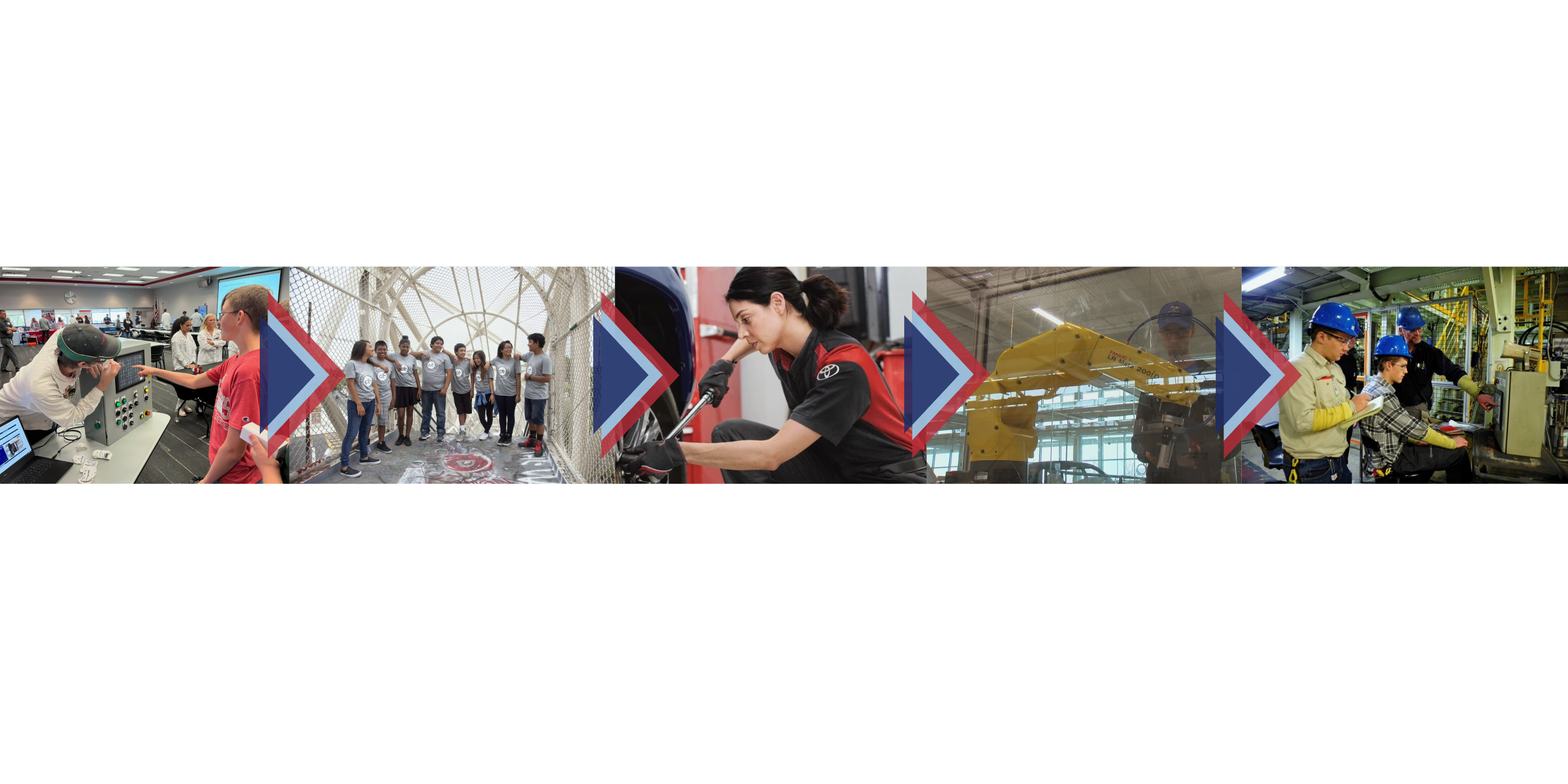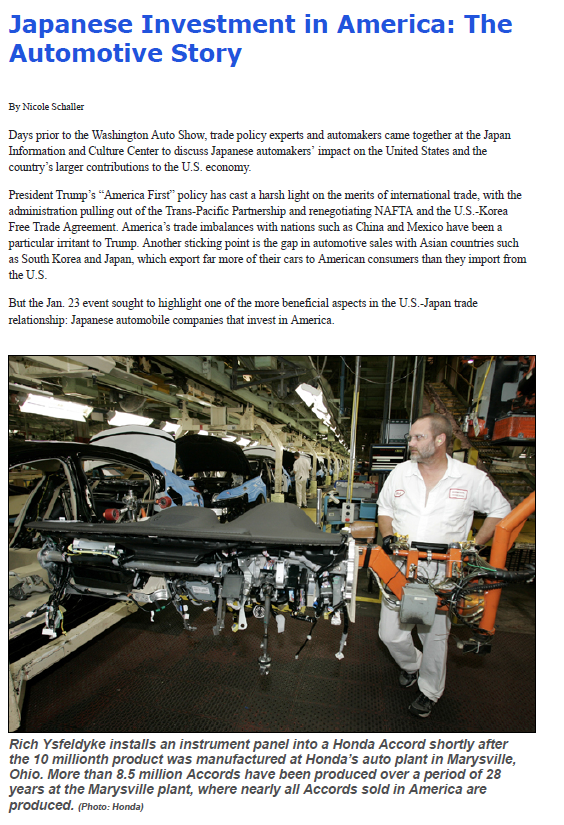By Nicole Schaller
Days prior to the Washington Auto Show, trade policy experts and automakers came together at the Japan Information and Culture Center to discuss Japanese automakers’ impact on the United States and the country’s larger contributions to the U.S. economy.
President Trump’s “America First” policy has cast a harsh light on the merits of international trade, with the administration pulling out of the Trans-Pacific Partnership and renegotiating NAFTA and the U.S.-Korea Free Trade Agreement. America’s trade imbalances with nations such as China and Mexico have been a particular irritant to Trump. Another sticking point is the gap in automotive sales with Asian countries such as South Korea and Japan, which export far more of their cars to American consumers than they import from the U.S.
But the Jan. 23 event sought to highlight one of the more beneficial aspects in the U.S.-Japan trade relationship: Japanese automobile companies that invest in America.
“What we are talking about here is one of the really great success stories to the U.S.-Japan relationship,” said Manny Manriquez, general director of the Japan Automobile Manufacturers Association (JAMA).
Others on the panel included Ted Klaus, vice president of strategic research at Honda Research and Design, who has worked for Honda for 27 years, and Scott Miller of the Center for Strategic and International Studies.
Miller spent a large part of his early career in the 1970s and 1980s working near the Honda manufacturing plant in Marysville, Ohio, where he witnessed firsthand the growth and success of the first Japanese automaker U.S. plant.
“Honda’s success is impressive in almost every respect today,” said Miller. “But it was a massive risk at the time and these [Japanese automotive] companies were taking massive risks to enter this big and somewhat hostile U.S. market. They did it, and they did it with excellency.”
At the time when Honda opened its factory in Marysville in 1982, America had endured an economic downturn in the 1970s, coupled with a fierce backlash against imported automobiles, particularly those from Japan. However, Honda was able to push through the mistrust by building a solid reputation for safe and consistent cars that met the needs of the American consumer.
“The thing that I think was well exemplified in the Japan auto industry in the United States is the power of local knowledge, even for a global company. We think about the automobile business as these massive global corporations, but in fact the most successful of them make it a point to understand local customers and local markets,” said Miller.
Miller used the example of Italian cars and how they are often tailored for narrow, windy roads that are prevalent in Italy, whereas cars that are made in America are tailored to wider, straight roads, including the Japanese cars built by U.S. manufacturing companies.
“This power of local knowledge … is what the companies do,” said Miller. “It’s important to the politics frankly because when you tailor local tastes, interests and local knowledge, you start to affect the culture of how cars fit into our lives. I think [Japanese auto] companies do it better than anyone today. I mean we watched the politics of Ohio change.”
In addition, the companies hired American workers and created motivation and management programs that resulted in high employee retention. American communities surrounding Japanese auto plants began to take a different outlook on working for companies like Honda.
Today, Japanese auto companies employ about 88,000 direct workers in America, and 75 percent of all Japanese cars are built in the United States. Honda alone accounts for over 30,000 U.S. workers. It has also invested over $18.5 billion in its U.S. operations and boasts the longest U.S. manufacturing presence of any international carmaker.
“[Honda employees] thought of themselves as American workers building American vehicles and it became, oddly, after all the hostility in the ’60s and the ’70s, it became a source of pride,” said Miller.
That trend continues today. The recent announcement of a new Toyota and Mazda joint plant in Alabama was praised and considered an “America First” policy success by President Trump at his State of the Union speech.
Klaus also emphasized Honda’s collaborative approach in working with education programs that help to strengthen ties not only within in the community, but also with future generations.
“Honda wants to be close to their customer,” said Klaus. “We want to study customers. We want to not only produce but create products locally to the customer. So, 35 years on, we have come full circle.”
Japanese carmakers beyond Honda have similar philosophies of reaching out and engaging with the community that surrounds their plants.
“I travel around the country visiting [JAMA] member company facilities,” said Manriquez. “And what strikes me is the communities around these facilities, they’re so deeply integrated with the facilities, the workers, the technicians that work in those factories, and the research and design centers. They are really vibrant communities in part because our member companies co-invest in those communities. They build college campuses or technical school campuses and put money in downtown centers and into community programs, so this is part of their long-term commitment.”
Source: The Washington Diplomat
Click to View PDF:


